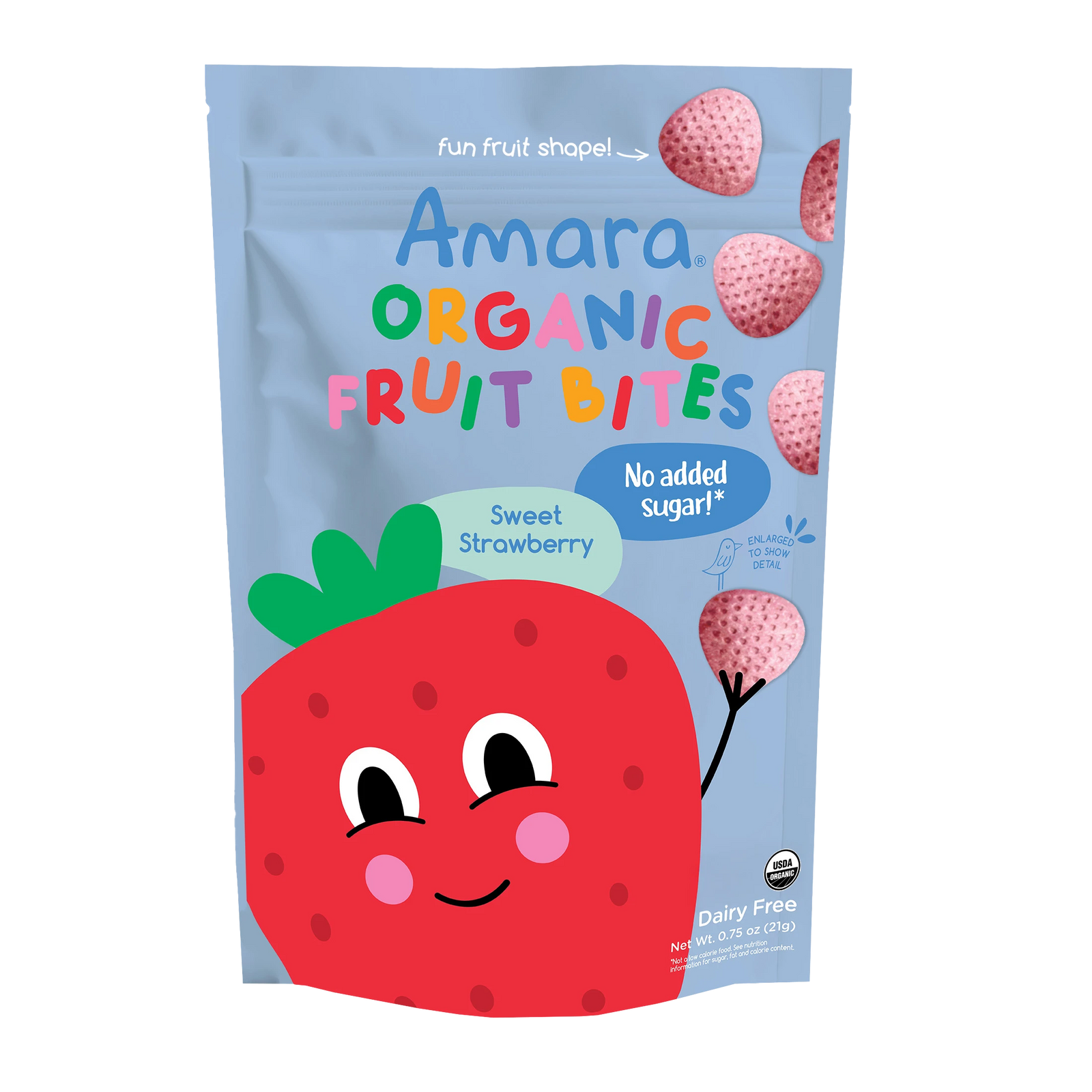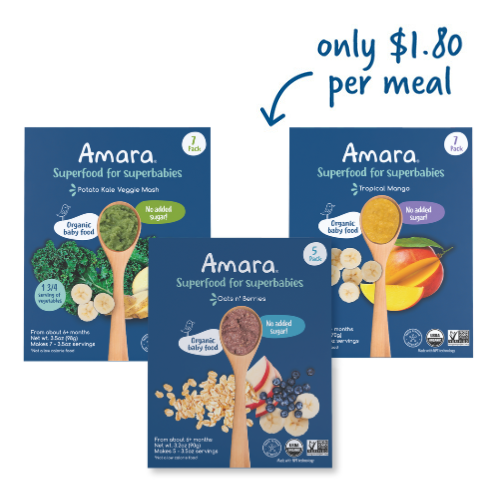
Baby Feeding Schedule and Timeline for the First Year
We could write a whole book on how and why nutrition is SO important during infancy (turns out a ton of people already have, LOL) -- but for now let’s just quickly run through the basics.
What and how a baby eats during its first year of life influences:
- eating habits later in life;
- taste preferences into childhood and even adulthood;
- healthy physical growth; and
- healthy brain development.
Given the exponential scope of learning and development in the first two years of life (ranging from cognitive functioning to fine motor skills to sensory intake and all the rest), this time period is so critical for laying the foundation for healthy eating and nutrition -- among other things. Nutritionists agree: the first two years are a crucial window of opportunity.
Knowing this, starting to feed your baby -- exciting as it is -- can also be incredibly nerve wracking.
Deep breath! It’s FUN (though notall the time) and MESSY (always), and as with so many things, simply having a general idea of what’s “normal” (for lack of a better word) at any given age can often be a huge relief. Spoiler alert -- there is a HUGE range and the entire concept of “normal eating” is very fluid during infancy.
What follows is a bird’s eye overview for feeding babies in the first year, with a focus on the stretch of time after you’ve already introduced solid foods. (For more on how to start solids, you can see our brief introduction to solids here and our go-to guide here.)
If you want to jump ahead, you can skip to: 4-6 months, 6-8 months, 9-11 months, or 12+ months.
But first, an introductory note:
More important than the specifics of how many times per day or what times each day your baby eats, exactly how many calories or grams of food she eats daily or per sitting, or what the exact ratio of breast milk/formula to solid foods is at any given moment is that she is exposed toa wide variety of fresh, real foodsand that she encounters foods in apositive atmosphere.
To point #1: this is the time to begin exposing your baby to many and varied flavors and textures -- offering a diverse array of fresh fruits, vegetables, and whole grains is going to help her learn to love whole, unprocessed foods from the outset and also set her up for a successful, healthy relationship with food as she grows up. (Amara offers an entire baby food line with tons of fresh, convenient options that deliver the same taste, flavor, and texture as a fresh, homemade meal without sacrificing any of the nutrients.)
And, as the second point: as researchers note, “optimal complementary feeding depends not only on what is fed but also on how, when, where and by whom a child is fed.” Translation: feeding your child in a low-stress environment and with a positive, encouraging attitude can carry you a long way. Patience and positivity, friends! The idea is that we don’t want our kids’ first forays into the wonderful world of culinary exploration to be anxious in any way -- so try not to put pressure on the situation. Meet food refusal with serenity; don’t throw up your hands at the first sign of food play (which is totally normal, BTW); where you can, choose feeding times when you’re not rushed. In short, do what you can to keep things, well, happy.
Isn’t that fun?
Okay, here we go…
4-6 months
During the first six months of life, as you almost certainly already know, experts recommend feeding formula or breast milk on demand.
Somewhere around 4-6 months, though, it’s time to start introducing solid foods (aka complementary foods) to your baby. (For more on this process and exactly when to get started, read here.) The initial days or weeks enacting this milestone are alearning phase. Truth: at first, babies don’t actually eat that much (if any) complementary food. That’s okay! Just like anything else, they have tolearn. We don’t expect them to just hop up and start walking, right? So it is with oatmeal (or whatever else you choose).
Here are some salient points to keep in mind about starting solids and “the goals” (HAH) over the course of the next 6-8 months, depending on when you started:
- Solid foods don’t immediately replace formula or breast milk (hence, “complementary foods”). Until a baby’s first birthday, formula and/or breast milk remain the dominant and most important source of nutrients for babies, so don’t throw out those bottles or stop nursing.
- Over the course of these months (until ~1 year of age), the ideal scenario is that you gradually ramp up to a pretty familiar feeding schedule of ~3 meals/2 snacks. This can happen at almost any pace, and you can tailor your escalation almost however you want, but typically guidelines recommend shifting the ratio of breast milk or formula to solids by degrees until you hit that sweet spot around one year where most of a baby's intake is solid foods.
- Similarly, you also want to endeavor to expose baby to increasing foods, textures, flavors, and pairings over time.
- Aim to be a responsive feeder: be slow and patient, be encouraging and kind, talk to your child and make eye contact with them while feeding. Again, we want baby to start to develop a positive association here, so she should look forward to sitting down at the high chair -- not have baby anxiety about it (yes, that’s real).
- Don’t forget about basic hand and food hygiene!
- If you’re going the DIY route, we have a homemade baby food guide that can help.
6-8 Months
How much food? At this stage babies benefit from an additional ~200 calories daily from solid foods (plus formula or breast milk -- average intake among 6-8-month-olds is ~24-32 oz. daily).
How often? Aim for 1-3 meals per day during these months, where each meal consists of ~2-3 tablespoons of food.
A note^^: If you’ve just started out, know that it takes time for a baby to learn to eat. Initially, you may be working with a tablespoon (or even less), and that’s fine. The first weeks of offering solids are more about giving your baby the chance to practice eating than they are about calorie intake. Remember, breast milk and formula are still the most important source(s) of nutrients for your baby, so you should continue to nurse/bottle feed as usual and simply add in solid foods where it works for you. If you miss a day,don’t sweat it.
What kinds of foods? You can serve up purees, mashed foods, or semi-solid foods (think: banana, cooked sweet potatoes, avocados). We have some more basic ideas here, and you can check out ways to incorporate meat, fat, and spices into your baby’s diet here.
Anything else?Why yes, actually, thanks for asking…
1) Don’t freak out if your baby isn’t interested, refuses to eat, or rejects certain foods. These are all VERY common, and maintaining a calm, positive attitude when any of them happens is your best tactic. Don’t force your baby to eat anything.
2) You can play with texture as your baby gains practice, moving from thinner to thicker purees or more chunky mashes, for example. In fact, there’s a critical window for introducing “lumpy” foods -- and it’s before the 10-month-mark. Keep this in mind, and you can always rely on things like cottage cheese or smashed up berries in a pinch.
9-11 months
How much food? From 9-11 months babies benefit from an additional ~300 calories daily in solid foods (plus formula or breast milk -- average intake for 9-11-month-olds is ~20-32 oz. daily). Throughout these months of transition, you’ll be shooting to work closer toward a 50/50 split between food and breast milk/formula.
How often? Try for between 2 and 4 meals each day, where each meal consists of ~½ cup of food. Don’t worry if your baby doesn’t eat her whole serving, though, and if she wants more than ½ cup, go for it! In the same vein, if you need to keep it steady at 2x/day through this whole “phase,” that works well for many, but if you have the bandwidth (and your baby has interest) in eating 4-5 times each day, have at it.
What kinds of foods? You can continue with purees but also should increasingly work in more textured foods. You can try serving finely chopped or mashed foods, as well as finger foods, too.
Anything else?You can increasingly offer food pairings during these months, which is fun! Amara has a great selection of nutritious and balanced blends, like oats and berries, potato and kale, and beans and corn, among several others. *Bonus -- these all are naturally textured, too, so they’re a fantastic option for introducing your baby to new consistencies as well.
12+ months
How much food?Ideally, at/around the one year mark, babies are getting ~500 calories daily from solid foods. After their first birthday, it’s completely fine to wean your baby entirely off formula or breast milk, but if you’d like to continue offering bottles, most experts suggest keeping the intake to ~16-20 oz per day so as not to interfere with a baby’s appetite for solids. (If you have questions about dairy after one, see here.)
How often?Your baby can eat like a grown-up! Hah. When you celebrate your baby’s first birthday, you can also celebrate that she can transition to what is probably a quite familiar eating schedule: 3 meals and 2 snacks each day. Your baby knows how much to eat better than anyone (so let her decide!), but for most, a meal might be anything in between ¼ and 1 cup of food per sitting.
What kinds of foods?Babies can, for the most part, eat whatever you and your family are eating -- just make sure it’s cut/mashed appropriately so as to not be a choking hazard… Hopefully your little one is well on her way to being a little foodie already, but if not, don’t lose hope. Keep offering a variety of fresh fruits, veggies, grains and “whole foods” (unprocessed foods/prepared dishes) -- science shows us that if we taste something enough, eventually we’ll like it. Repetition is the key to success here.
Anything else?Every child is different -- all the numbers and data in this guide areaverages. We hope they give you a sense of things, but they are not set in stone. Your child may consume more or less (or more or less frequently) than any of these suggestions depending on her own body functioning and size, activity level, how much she ate yesterday (or two days ago), and even what foods are on the table (because foods have different energy densities).
Lastly, remember what we said at the outset: “optimal complementary feeding depends not only on what is fed but also on how, when, where and by whom a child is fed.” All kinds of different factors play into making meals a positive part of your child’s day -- healthy foods are a pillar, of course, but so too is your encouragement, patience, engagement and excitement about this learning process. This is just the beginning, friends! 😉
At Amara, we use a nutrient-pressed technology to lock in the same taste, texture and nutrients of fresh foods without any additives or added sugar. Convenient, delicious, and REAL, our organic baby food line offers plant-based proteins, whole grains, and vegetable and fruit blend pairings that can help you make the most of your baby’s starting solids journey -- because we’re as committed to setting your baby up for a lifetime of healthy, flavorful eating as you are.








Leave A Comment